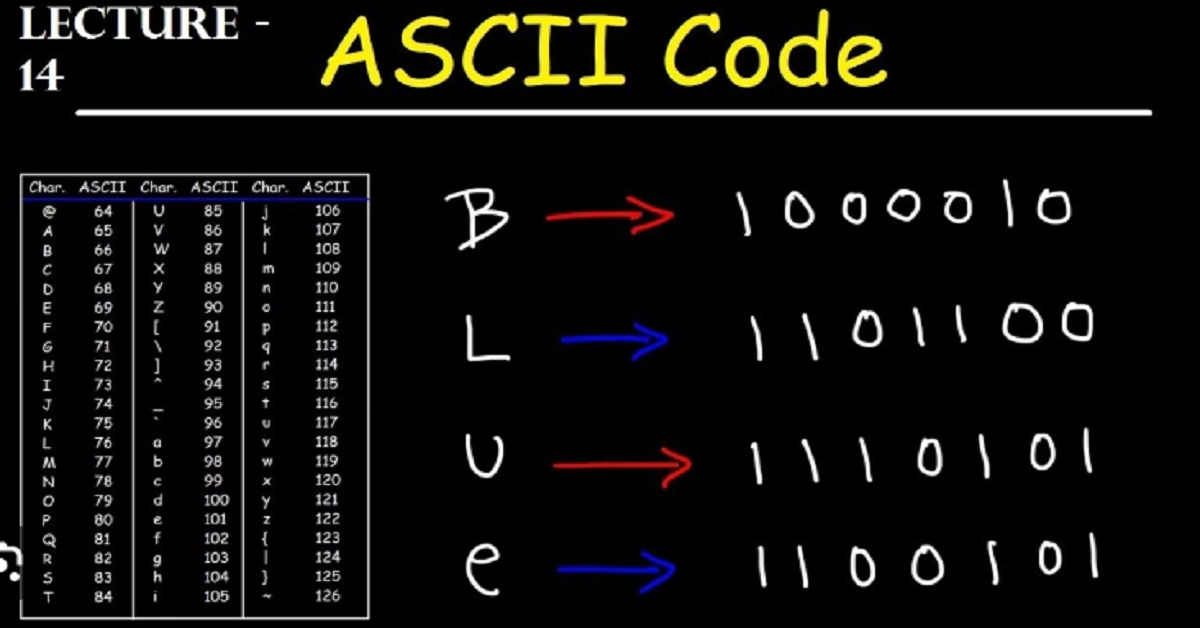# Introduction
Have you ever stumbled upon a mysterious code that left you scratching your head, wondering what hidden secret it might hold? The seemingly cryptic string “001-jt1ufzowufazsowkyhtirw-429770558” is one of those alphanumeric puzzles that captures our imagination. It looks random at first glance, yet it sparks an undeniable urge to decode its meaning. In this article, we’ll explore the fascinating world of cryptic codes, delve into their historical significance, examine potential methods for uncovering hidden messages, and see how such codes continue to intrigue people in our digital age.
## Understanding the Alphanumeric Enigma
Mysterious codes are everywhere, from the cryptic scrawls in medieval manuscripts to the modern-day puzzles left behind by hackers or puzzle enthusiasts. “001-jt1ufzowufazsowkyhtirw-429770558” is no exception. It might look like a random assortment of numbers and letters, but there’s something undeniably compelling about its structure.
The Role of Alphanumeric Sequences
Alphanumeric sequences—combinations of letters and numbers—are used for everything from password protection to advanced encryption systems. They can be as simple as your typical Wi-Fi password or as complex as a top-secret government cipher. The string we’re examining could serve as a password, a coded message, or just a creative placeholder. It’s the not knowing that piques our interest.
Possible Origins of Cryptic Codes
Alphanumeric codes can come from countless places: puzzle contests, cryptographic experiments, secret societies, or even from random data logs generated by software. Some are intended to be solved, while others are just a byproduct of everyday data processing. When you see something like “001-jt1ufzowufazsowkyhtirw-429770558,” it might be tempting to assume it holds profound meaning—though it could just as easily be a random label generated by a machine.
## Historical Context of Codes and Ciphers
Humans have been using codes and ciphers for thousands of years. From ancient civilizations to modern intelligence agencies, cryptography has played a crucial role in communication and security.
Ancient Code Systems
Civilizations such as the Egyptians and Romans were known for their rudimentary forms of secret writing. The Caesar cipher, for instance, was a simple shift cipher used by Julius Caesar to protect military communications. These early techniques paved the way for more sophisticated methods.
Modern-Day Encryption
Fast forward to today, and we’re dealing with highly advanced encryption algorithms that safeguard everything from personal emails to national security. RSA, AES, and other encryption standards are the backbone of online security. Compared to these sophisticated systems, a code like “001-jt1ufzowufazsowkyhtirw-429770558” may appear amateur—or it could be part of a larger, more complex puzzle.
## Dissecting “001-jt1ufzowufazsowkyhtirw-429770558”
Now, let’s look closer at the various parts of this code. It’s divided into three segments: “001,” “jt1ufzowufazsowkyhtirw,” and “429770558.”
The “001” Segment
Numbers at the start of a code might indicate a version number, a simple counter, or a placeholder. “001” could imply that this is the first in a series. Alternatively, it might be a deliberate misdirection.
The “jt1ufzowufazsowkyhtirw” String
This portion is the real head-scratcher. It’s an alphabetic string peppered with a single digit (“1”). The letters might be a simple substitution cipher, or they might be randomly generated. If it’s encoded, it could use a shift cipher, transposition cipher, or some other cryptographic method.
The “429770558” Number
Numbers at the end of a code can indicate a timestamp, a checksum, or an identifier. It might be a random integer or a carefully selected piece of data. If it’s a timestamp, it could represent a moment in time, but it doesn’t neatly convert to a standard date. If it’s a checksum, it might help verify the integrity of the preceding string.
Observing Patterns and Variations
Sometimes, codes have repeating patterns or consistent letter spacing. In “jt1ufzowufazsowkyhtirw,” there aren’t any obvious repetitions. It could mean that each letter is deliberately placed, or it could be pure randomness. Without further context, it’s hard to determine if there’s an intentional pattern or if it’s simply chaotic.
## Symbolic and Cultural Interpretations
Mysterious codes aren’t just the domain of spies and cryptographers; they’ve also captured the imagination of pop culture enthusiasts and conspiracy theorists alike.
Pop Culture References
Whether it’s hidden messages in movies, TV shows, or music albums, fans love to dissect cryptic codes for Easter eggs. Could “001-jt1ufzowufazsowkyhtirw-429770558” be referencing a character, a storyline, or a hidden cameo? Without context, the possibilities are endless.
Conspiracy Theories and Mystical Beliefs
Some might see a random code and assume it’s part of a grand conspiracy or a hidden message from an otherworldly source. We live in an age where internet forums and social media amplify every whisper of a clue into a roar of speculation. Could this code be tied to alien transmissions or secret government projects? While such theories can be entertaining, they’re often based on speculation rather than evidence.
## Technical Approaches to Decoding
If you’re determined to crack the code, there are systematic ways to go about it.
Cryptographic Techniques
Substitution ciphers, transposition ciphers, and more advanced methods like the Vigenère cipher might all be potential ways to encode this string. Tools like frequency analysis can help determine if the letters follow a typical distribution. If it’s purely random, though, these methods might yield nothing but frustration.
Brute Force vs. Pattern Recognition
Brute force methods try every possible combination until something meaningful emerges, but that can be time-consuming. Pattern recognition, on the other hand, leverages logic and insight—looking for repeated letters, analyzing letter pair frequencies, or matching known words. A code with no pattern could still stump even the most determined puzzle solver.
## The Impact of Online Communities
In the digital age, you’re rarely alone in your quest to decode a mystery. Entire online communities exist for the sole purpose of solving cryptic puzzles.
Crowdsourcing Knowledge
From Reddit to specialized forums, puzzle enthusiasts come together to tackle the toughest codes. They share methods, compare notes, and build off each other’s breakthroughs. If “001-jt1ufzowufazsowkyhtirw-429770558” is part of a larger puzzle, you might find a dedicated thread analyzing every character.
Internet Subcultures and Memes
Sometimes, codes become memes. People might share them as jokes or references, and over time, they take on a life of their own. An otherwise random string could become iconic if it resonates with enough people online.
## Real-World Applications of Enigmatic Codes
Mysteries aren’t just for fun. Codes and cryptic sequences can serve legitimate purposes in various fields.
Data Security
Companies and governments rely on encrypted keys to protect sensitive information. A random-looking code might be part of a secure system, designed to thwart unauthorized access. If “001-jt1ufzowufazsowkyhtirw-429770558” is an encryption key, its complexity could be a deliberate defense mechanism.
Military and Government Uses
The military has a long history of using coded messages. From the Navajo Code Talkers to modern encryption, secrecy can be a matter of life and death. While we don’t know if this particular string has any military connection, it’s a possibility worth considering, especially if it appears in classified documents or secured databases.
## Ethical Considerations and Privacy
With great power comes great responsibility—this certainly applies to decoding secret messages.
Transparency vs. Secrecy
On one hand, uncovering hidden information can promote transparency and truth. On the other, people and organizations have a right to keep certain data private. If you stumble upon a cryptic code that belongs to someone else, is it ethical to crack it? The answer often depends on context and intent.
The Thin Line Between Curiosity and Intrusion
Curiosity is natural, and solving puzzles can be intellectually rewarding. However, prying into something that’s meant to be private crosses ethical boundaries. It’s essential to consider whether your quest for answers might harm someone’s privacy or security.
## Myth vs. Reality
Not every string of letters and numbers is a key to a hidden treasure or a secret vault of knowledge.
Overhyping Random Strings
We sometimes fall into the trap of believing that every cryptic sequence holds deep significance. Random data, however, is generated daily by computers, sensors, and countless other sources. Many codes turn out to be meaningless placeholders or random seeds used in software.
Authentic Enigma vs. Coincidence
Distinguishing a genuine code from random noise is part of the challenge. Some sequences do have real, hidden meanings. Others are purely coincidental. The line between the two can be razor-thin, especially when we’re missing context.
## Challenges in Decoding
If you decide to embark on a decoding journey, be prepared to face numerous hurdles.
Obscurity of Data
Without additional clues, you’re working in the dark. You might need hints from a puzzle creator, or you might need to stumble upon related data that provides context.
Ever-Evolving Techniques
As technology advances, so do the methods for creating and breaking codes. Yesterday’s unbreakable cipher might be easily cracked by tomorrow’s quantum computer. This dynamic nature keeps code-breaking both challenging and exciting.
## Future Prospects
We’re on the brink of major technological shifts that could redefine cryptography and code-breaking.
AI and Machine Learning
Machine learning algorithms excel at pattern recognition. They can sift through massive amounts of data to find subtle clues humans might miss. In the future, AI might become an essential tool for decoding everything from puzzle ciphers to advanced military encryption.
Quantum Computing and Encryption
Quantum computing promises unprecedented computational power. While it could break current encryption methods, it also paves the way for quantum-resistant algorithms. Codes like “001-jt1ufzowufazsowkyhtirw-429770558” might be child’s play for a sufficiently advanced quantum computer, assuming there’s a method behind the madness.
## Step-by-Step Exploration
If you’re determined to crack this particular code, here’s a simplified roadmap:
Gathering Clues
Collect every piece of information related to the code. Context is king. Where did you find it? Is it part of a larger text? Are there similar codes nearby?
Testing Hypotheses
Try simple substitution ciphers, frequency analysis, or online code-breaking tools. Keep an open mind and don’t dismiss outlandish theories too quickly—you never know which angle will provide a breakthrough.
Iterating the Process
Decoding can be a loop of trial and error. Each new test might bring you closer to a solution or push you in a different direction. Persistence is key.
## Lessons from the Journey
Whether or not you crack the code, there’s value in the attempt.
Importance of Collaborative Efforts
Complex puzzles are often solved by groups of people pooling their knowledge. From cryptography experts to casual puzzle enthusiasts, everyone has a unique perspective to offer.
Balancing Curiosity with Responsibility
Curiosity drives innovation, but it’s crucial to maintain ethical boundaries. Use your puzzle-solving powers for good, and respect the privacy and security of others.
## Conclusion
The string “001-jt1ufzowufazsowkyhtirw-429770558” could be an elaborate code, a random snippet of data, or part of a bigger puzzle we have yet to uncover. While it may remain an enigma, the journey to decode it offers a fascinating look into cryptography, technology, and human curiosity. Codes—whether they protect secrets or merely tease our imaginations—are woven into the fabric of our history and our future. Ultimately, the mystery itself is part of the allure. So, if you’re up for an adventure in puzzle-solving, why not take a stab at this alphanumeric labyrinth? You never know what you might discover along the way.

